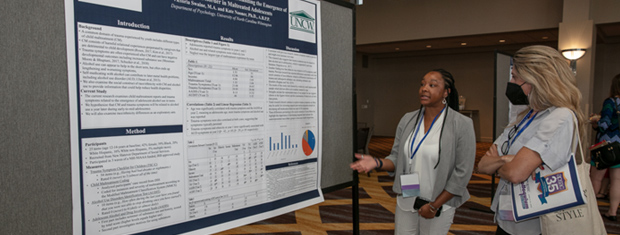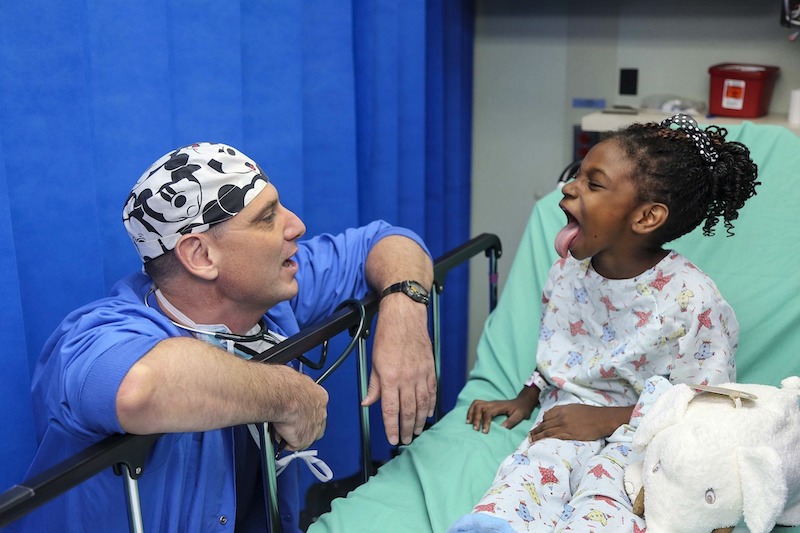




APSAC's National Interdisciplinary Guidelines Task Forces regularly publish concise,
data-based guidelines on key areas of practice in the field of child maltreatment. APSAC
Guidelines for Practice are submitted through a rigorous, multi-layered peer review process,
which involves experts in subject areas not on the task force, APSAC members, legal counsel,
and APSAC's Board of Directors. All Guidelines for Practice have been approved by the APSAC Board.
 This database contains all Practice Guidelines published to date. Scroll down to select a set of
guidelines. Once a publication appears in the box, you can use the Enlarge button to open the
document in a new window or tab (depending on how your browser is set up). This will allow you to view the document with larger print.
This database contains all Practice Guidelines published to date. Scroll down to select a set of
guidelines. Once a publication appears in the box, you can use the Enlarge button to open the
document in a new window or tab (depending on how your browser is set up). This will allow you to view the document with larger print.
To print a document, first use the Enlarge button to open the document in a new window or tab. Then use your browser's Print command.
To return here from a new tab, close the tab. To return from
a new window, click your browser's Back button.
In the listing below, click on a year and issue number to see the articles in that publication.
Forensic Interviewing of Children
These guidelines are an update of the 2012 series of APSAC Practice Guidelines, titled Interviewing in Cases of Suspected Child Abuse. They reflect current knowledge about best practices related to forensic interviews and should be considered in conjunction with the 2018 APSAC Handbook on Child Maltreatment, 4th Edition (see especially Chapter 19, “When Interviewing Children: A Review and Update” by Saywitz et al.). They are aspirational and intended to encourage the highest level of interview proficiency, offering direction for training professionals who conduct child forensic interviews. These guidelines are not intended to establish a legal standard of care or a rigid standard of practice to which professionals are expected to adhere in all cases. They provide a framework for professionals who conduct forensic interviews and are not an all-inclusive guide. Published 2023.
Forensic Mental Health Evaluations When Child Maltreatment is at Issue
These guidelines were primarily developed for mental health professionals, with the goal of advancing the quality of their evaluations, when harm to a child by caregivers, substitute caregivers, or those acting in loco parentis is a question before the court. These are not forensic interviewing guidelines, which are for investigative and prosecution purposes and do not necessarily involve mental health professionals. These guidelines offer new and updated recommendations for mental health evaluators serving in child maltreatment cases and are a transformational revision and replacement of APSAC’s guidelines, “Psychosocial Evaluation of Suspected Sexual Abuse in Children.” Published 2022.
These guidelines are written to provide front-line child protection workers with the information and tools to understand what psychological maltreatment (PM) is, to detect it in all its forms, to understand how it relates to other types of maltreatment, and to determine the nature and degree of its existence. They can also provide guidance to child welfare agencies and family or criminal courts for cases where PM may be an issue.
Evidence-Based Service Planning Guidelines for Child Welfare
The American Professional Society on the Abuse of Children (APSAC) Task Force report on the evidence-based service planning (EBSP) approach to child welfare services (CWS) plans and recommendations for practice. The focus of the policy report is on formal psychosocial services. CWS plans prescribe services to promote core child welfare objectives and to benefit children and families. The goal of EBSP is to construct service plans based on the general principles of evidence-based practice and prefer services with empirical support for clinical problems or needs associated with the causes or consequences of child abuse and neglect (CAN). EBSP aims to facilitate to overarching service approach that is collaborative, respectful, and includes services that are most likely to lead to outcomes on both family identified and child welfare mission goals. EBSP emphasizes a focused, assessment-driven, and science-informed approach that both favors plans that are sufficient and avoids overburdening families with compulsory services that address problems which are not directly related to the child welfare CAN referral.
The commercial sexual exploitation of children (CSEC) is a major public health problem in the United States and worldwide. Although the true prevalence of CSEC is unknown, it has been estimated that approximately 244,000 U.S. children are at risk for commercial sexual exploitation each year (Estes & Weiner, 2002). In a recent study, Edwards and colleagues found that among a nationally representative sample of more than 13,000 U.S. adolescents, 3.5% admitted to exchanging sex for money or drugs (Edwards, Iritani, & Hallfors, 2006). Many CSEC victims will present for medical care at some point during their period of exploitation, often for treatment of acute conditions. These guidelines provide medical professionals with an overview regarding the current understanding of the commercial sexual exploitation of children. They focus on the epidemiology of CSEC, the impact of exploitation on victim physical and mental health, and the role of the medical provider in identifying victims, assessing their needs and securing appropriate services. The guidelines primarily address the needs of victims of prostitution and other sexually oriented work (for example, exotic dancing) and sex tourism; the needs of victims of pornography are described in detail elsewhere (Cooper, 2005a).
Forensic Interviewing in Cases of Suspected Child Abuse
Forensic interviewing of suspected child abuse victims is a specialized skill. It is investigative in nature and used to obtain information to help determine whether abuse has occurred. Forensic interviews are most often conducted by specially trained child forensic interviewers, law enforcement investigators, and child protective service workers. These interviews can provide critical evidence for both criminal child abuse investigations and civil child protection proceedings. Information from the interviews may also identify other victims, assist professionals responsible for assessing risk and safety needs of children and families, and facilitate case management decisions. Because children are often a key source of information about alleged abuse (especially child sexual abuse), it is critical that these interviews be done competently.
La Entrevista Forense en Casos de Sospecha de Abuso Infantil
La entrevista forense de niños los cuales se sospecha de ser víctimas de abuso es una destreza especializada. La misma es investigativa por naturaleza y se utiliza para obtener información que permita determinar si abuso ha ocurrido. La entrevista forense es más frecuentemente llevada a cabo por entrevistadores especializados en la entrevista forense de menores, por investigadores encargados del cumplimiento de la ley, y por trabajadores de servicios de protección de menores. Estas entrevistas pueden proveer evidencia crítica tanto en investigaciones de abuso criminal como en procedimientos civiles de protección. La información obtenida en estas entrevistas puede ayudar a identificar otras víctimas, asistir profesionales responsables por la evaluación de riesgo y necesidades de seguridad de niños y familias, y en facilitar decisiones en el manejo de casos. Ya que los niños a menudo son una fuente clave de información sobre alegatos de abuso (especialmente en el abuso sexual), es crítico que estas entrevistas sean llevadas a cabo de manera competente.
Integrating Prevention Into the Work of Child Maltreatment Professionals
Preventing maltreatment spares children pain and suffering, both physical and psychological, and improves their long-term health and developmental outcomes. The serious physical and mental harms manifested during adulthood further call us to action (Anda et al., 2002). Prevention mitigates the direct costs of child abuse and neglect as well as improving all of our lives through increased productivity and decreased crime and need for medical, mental health and social services (Alexander et al., 2003). Prevent Child Abuse America (Wang & Holton, 2008) used “conservative” estimates to calculate these direct and indirect costs at $103.8 billion in 2007. Early prevention may be even more effective in preventing harm from abuse and neglect, saving money for society, and improving society’s health and happiness overall, with the included objective of leveraging current practices and programs to change how society values children (Greeley, 2009).
Challenges in the Evaluation of Child Neglect
Child neglect is consistently the most frequently reported type of maltreatment, accounting for greater than 60% of maltreatment reports in 2005.1 And while rates of substantiated cases involving physical and sexual abuse declined significantly in the 1990’s (by 36% and 47%, respectively), such was not the case for child neglect. The latter showed fluctuating rates, with only a 7% total decline.2 Yet despite its prevalence, it is arguably the least understood form of child maltreatment, lacking either a consistent definition3 or a uniformly applied classification system. The purpose of these Guidelines is to give a broad overview of the current understanding of child neglect, using an evidence-based approach to focus on the impact of neglect on children, and the multidisciplinary approach to child neglect evaluations. Specific discussion of intervention strategies is beyond the scope of this work.
Psychosocial Evaluation of Suspected Sexual Abuse in Children: Second Edition
These Guidelines for mental health professionals reflect current knowledge and an emerging consensus about the psychosocial evaluation of suspected sexual abuse in children. They are not intended as a standard of practice to which practitioners are expected to adhere in all cases. Evaluators must have the flexibility to exercise clinical judgment in individual cases. Laws and local customs may also influence the accepted method in a given community. Practitioners must be prepared to justify their decisions about particular practices in specific cases. As experience and scientific knowledge expand, further refinement and revision of these Guidelines are expected.
Use of Anatomical Dolls in Child Sexual Abuse Assessments
These Guidelines have been developed to reflect current knowledge and generally accepted practice concerning the use of anatomical dolls in interviewing children during assessments of suspected child sexual abuse. The Guidelines are offered to encourage appropriate use of anatomical dolls and to provide direction in the development of training for professionals. The Guidelines are not intended to establish a legal standard of care or a rigid standard of practice to which professionals are expected to adhere. Interviewers must have the flexibility to exercise judgment in individual cases. Laws and local customs may influence accepted methods in a given community. Professionals should be knowledgeable about various constraints on practice and prepared to justify their decisions about particular practices in specific cases. As experience and scientific knowledge expand, further revision of these Guidelines is expected.